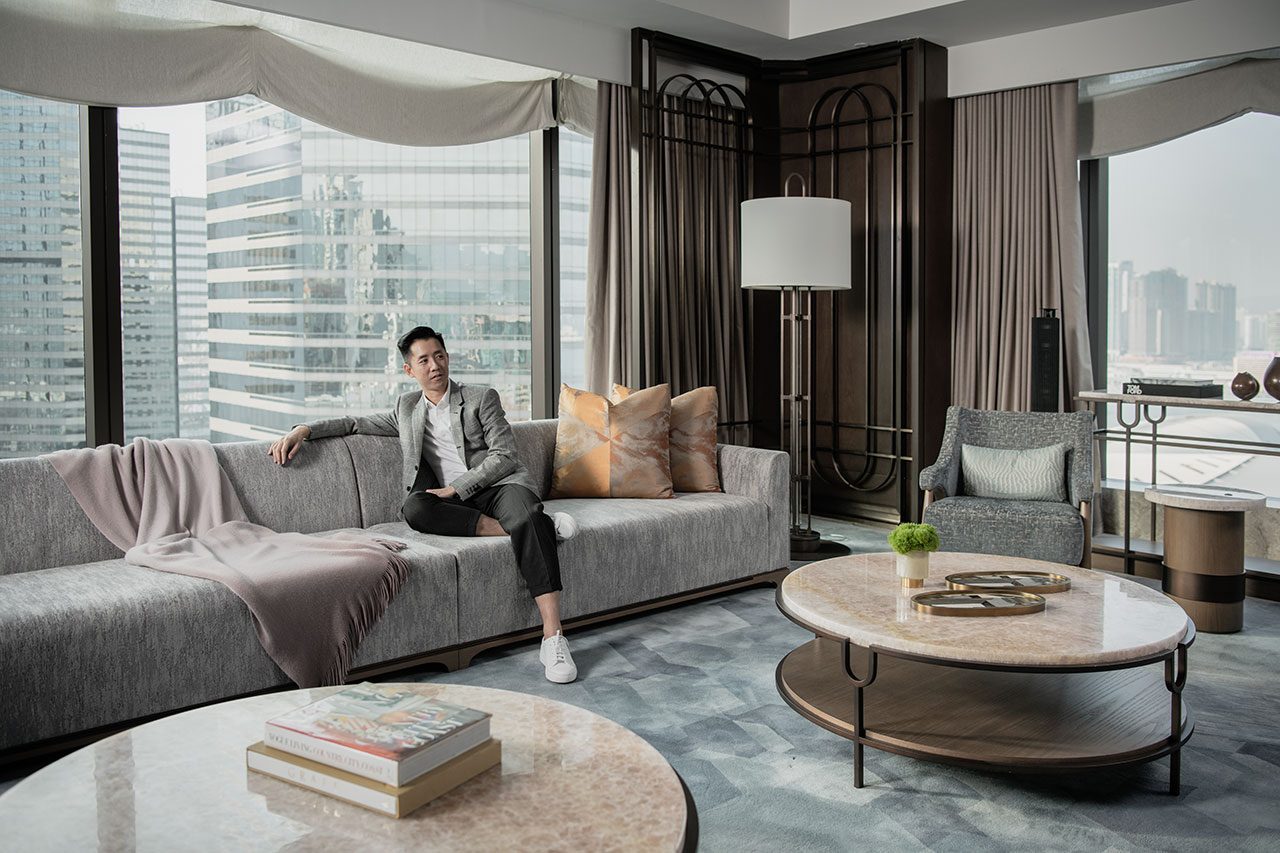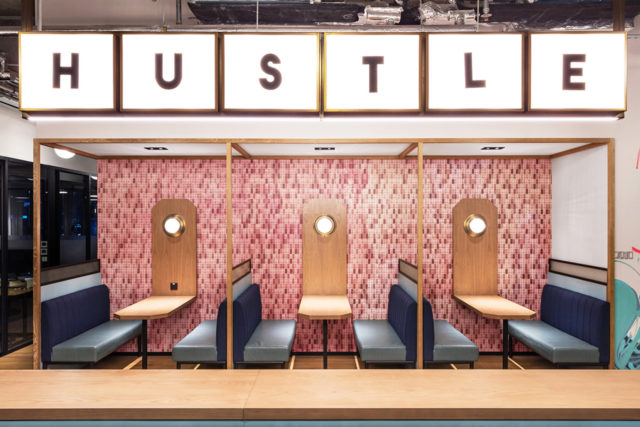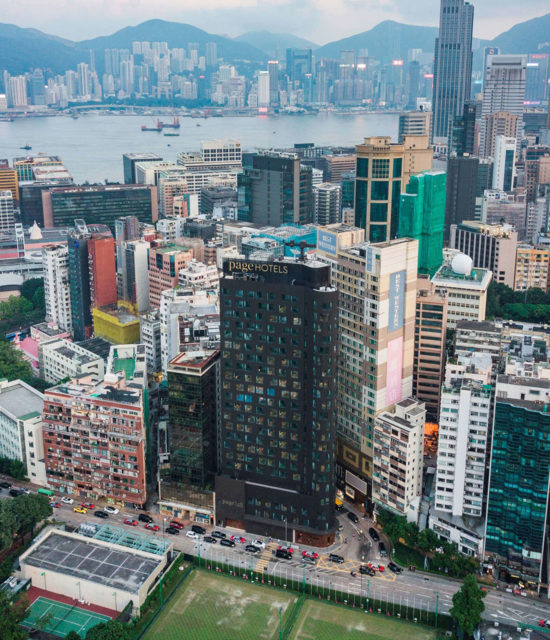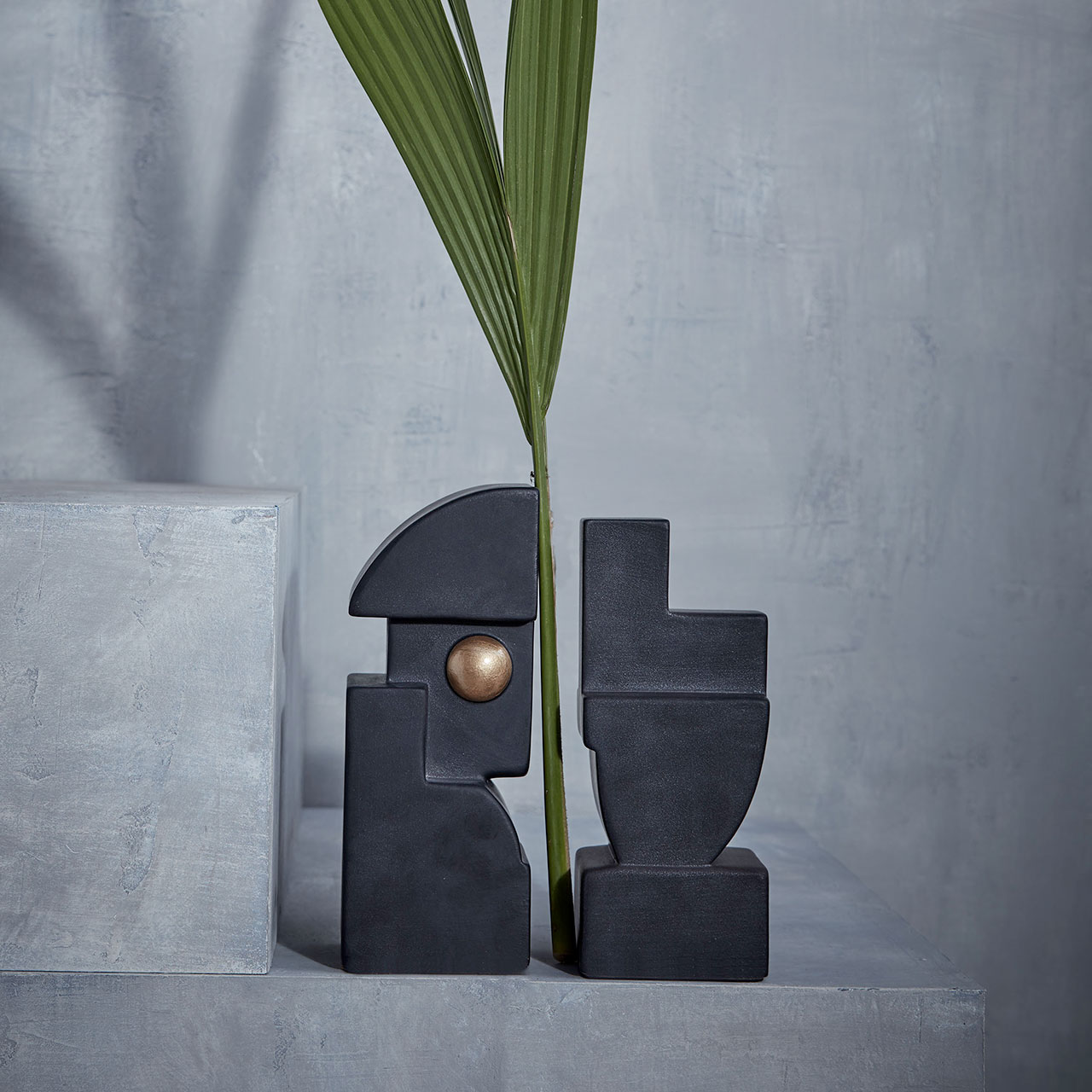
A shrill noise erupts from the PA system, tearing into the stillness of the presidential suite of the St. Regis Hong Kong, courtesy of a technician testing the fire alarm in the yet-to-be-opened luxury hotel. Yet André Fu seems entirely unfazed, such is his composure while nestled in his natural environment – a hotel of his own design.
“The mind needs to be very clear, because you’re doing things simultaneously, and you have to be quite truthful,” he offers later as an explanation of his zen-like conduct, both in life and work.
A graduate of the University of Cambridge’s architecture programme, the 44-year-old Hong Kong native has established himself as one of the most exciting design talents to emerge from the city since the turn of the millennium, when he burst onto the scene with his design for the widely-lauded Upper House in 2009. Styled as “a retreat from a dynamic city,” the boutique hotel, situated atop Pacific Place, has since become a calling card in his portfolio.
His client base includes some of the most prestigious luxury hotel brands in the world – Waldorf-Astoria, Shangri-La, Four Seasons – who were drawn to Fu’s nomadic approach which distills each city into its most salient themes, and further refracts through them his signature aesthetic of clean lines and rich materials. While not immediately recognisable, Fu’s designs invariably leave each guest with the same sensation of pervasive, sheltered calm.
He would not, it seems, be the most obvious choice for the St. Regis brand, whose first location in New York inhabits an opulent French Beaux-Arts-style building built by the wealthy Astor family in 1904 and has served as the archetype for the hotel chain’s 60-plus locations since. Rather than pigeonholing his aesthetic into the hotel’s narrow brief, Fu bypassed the usual brand touchpoints and instead sought to replicate the less tangible feeling of entering a private mansion, possibly even that of the Astors.
The hotel’s 129 rooms have been built around Fu’s memories and silhouettes of his home city, and reflect the complex dichotomy of its East-meets-West history. “It’s very challenging because many designers tend toward a more eclectic representation of Hong Kong,” he says. “I wanted to take a slightly different stance by celebrating the city from a softer, more conceptual perspective.” Cue muted colours and traditional lacquer work juxtaposed against dusty grey timber panelling inspired by the cityscape outside.
Nevertheless, hallmarks of St. Regis remain in the Art Deco-inspired mosaic centrepiece of the hotel bar, as well as the perennial afternoon tea service held in the drawing room.
Fu readily admits to similarities between his approach to working with brands, and the approach of a sensitive creative director taking the helm of a storied fashion house. “Sometimes there are more successful stories when the designer really tapped into the archive and the atelier and the whole history and artisanship to express something new,” he elaborates. “Then there are times when brands simply take on a designer who does their own thing. They reverse the brand without respecting the brand itself.”
And then there are times when designers feel that the only avenue to fully expressing their vision is creating their own brand. In a similar vein to John Galliano, Karl Lagerfeld and the like, Fu struck out in earnest with his own brand – André Fu Living – in 2016. Initially created to serve as a vessel for his product collaborations, Fu reinvigorated the brand this past January by partnering with Lane Crawford to launch an ambitious, standalone 150-piece collection, which includes everything from large furniture pieces such as chairs, coffee tables and folding screens, to a not-insignificant offering of Italian-made textile goods, from throws and blankets to rugs, bedding, and even silk scarves.
“It’s even more challenging because I’m not responding to anything – I’m focusing on myself and I become the client, the brief and the brand,” he says. Much like Fu’s aesthetic, the collection lacks a particular standout design. Rather, it is based on the synergy between individual objects that creates a pervasive mood in any environment.
Despite the collection’s wide-ranging purview, Fu is adamant that his vision remains specific in a time where people no longer have the time to think or reflect, an approach he believes brands will increasingly ascribe to in the future. “If it’s done for them and if it’s done right, you don’t have to appeal to everybody,” he says. “That’s what the world is craving for, a very curated experience.”
With his brand’s first foray into textiles, is there a chance that Fu might take one step further into the realm of fashion? He chuckles, yet remains tight-lipped. The meaning behind that, like his designs, is just something we will have to deduce for ourselves.












